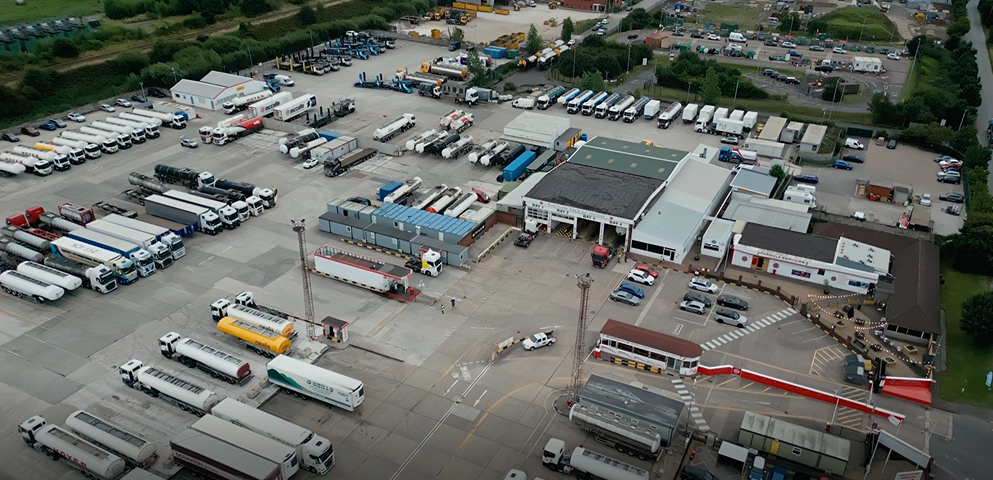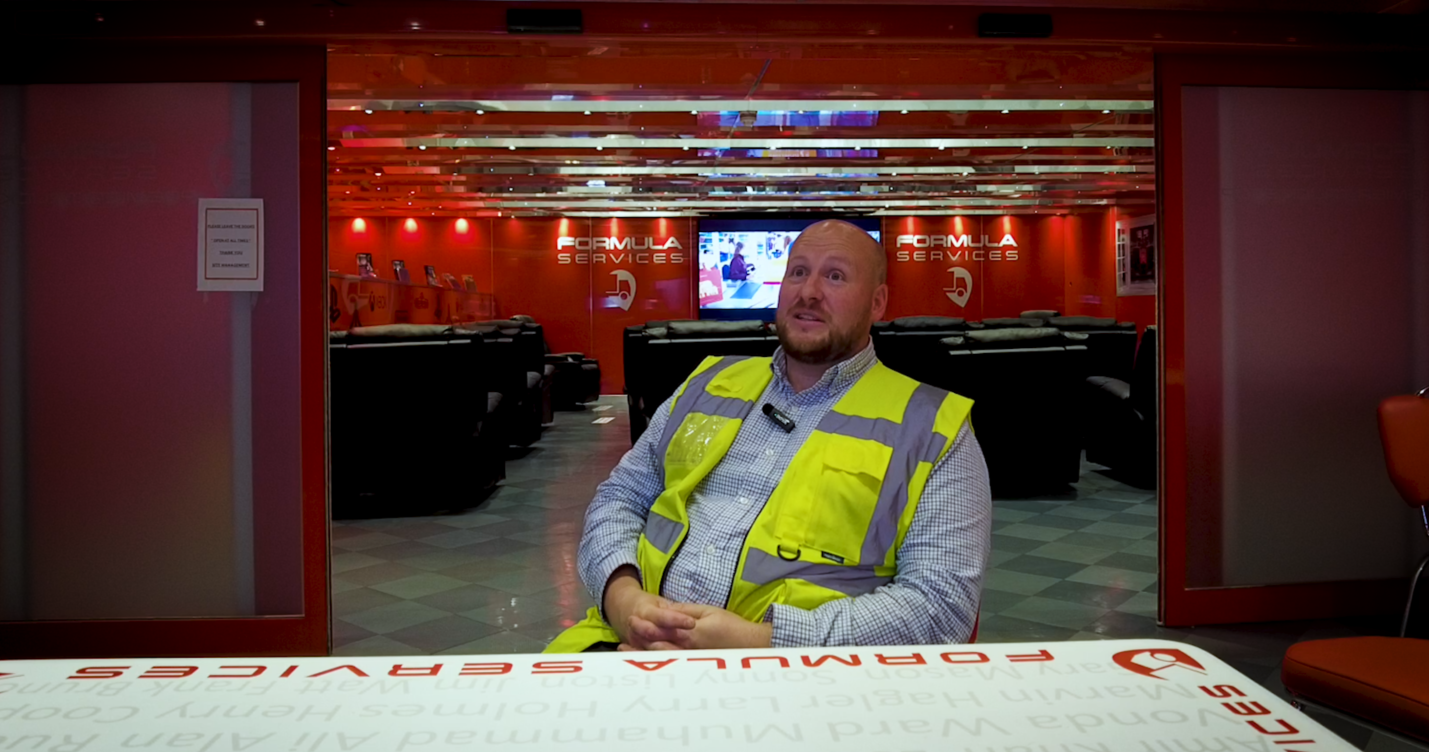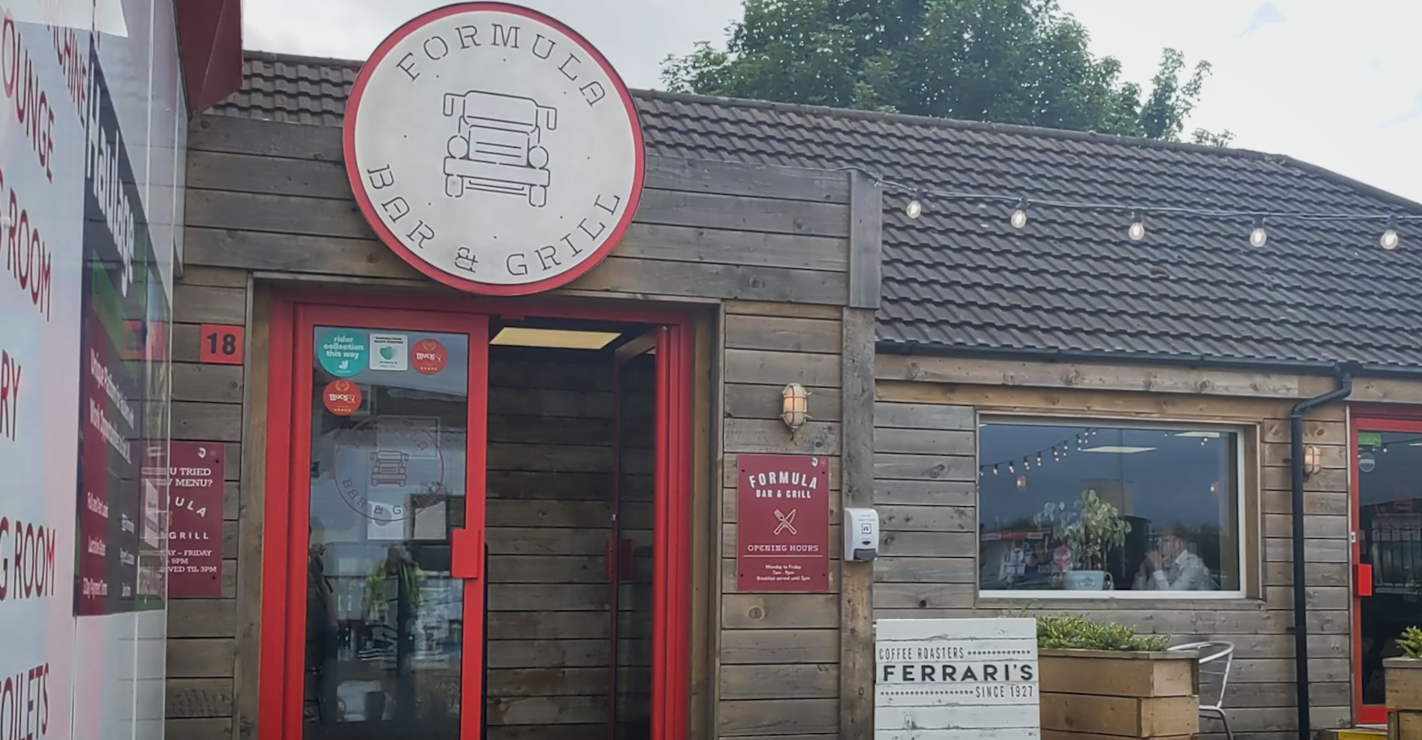
Susie Jones
A Formula Premier Truckstop belseje: A sikerük és a SNAP-pal való kapcsolatuk feltárása
Létrehozva: 07. 08. 2025
•
Frissítve: 07. 08. 2025
Ellesmere Portban, az M53-as autópályától egy kőhajításnyira található a Formula Premier Truckstop. A 2023-ban az Egyesült Királyságban az Év Truckstopjának választott helyszín a kamionosok nagy kedvence lett. A Forma-1-hez fűződő kapcsolatuk előtt tisztelegve (a telephely egykor a világ minden táján üzemanyaggal látta el a versenyautókat), a kamionstopot az ikonikus vörös színben pompázik, és rengeteg sportemléktárgyat kínál, hogy a látogatókat órákig lefoglalja.
A 10. évfordulójukat ünneplő Ash Evans üzemeltetési vezetővel leültünk beszélgetni az új létesítményektől és a fenntarthatósági céloktól kezdve a sofőrök jólétéig és a SNAP-pal való kapcsolatukig.
"Az elmúlt 10 évben kamionstopként működtünk. Nyitottak vagyunk minden teherautósofőr számára, legyen az nagy vagy kicsi, merev és arctikus. Van egy üzemanyagtöltő állomásunk, amely addig van nyitva, amíg van üzemanyagkártyád " - magyarázza Ash.

Szolgáltatások
A telephely számos fantasztikus létesítményt kínál, hogy a tehergépkocsi-vezetők számára otthont biztosítson.
"Körülbelül 150 férőhellyel, helyszíni étteremmel, edzőteremmel, valamint külön férfi és női mosdókkal rendelkezünk. Igyekszünk a lehető legtöbbet beleszámítani a parkolás árába " - állítja Ash.
Miközben körbevezetnek minket a helyszínen, végigsétálunk egy külön erre a célra kialakított játékszobán, amely biliárddal és asztalitenisz asztallal, masszázsszékekkel és rengeteg játékkonzollal felszerelt társalgóval van felszerelve, hogy segítsen ellazulni a sofőrnek egy hosszú műszak után. Ami a gyakorlatiasabb oldalt illeti, a telephelyen mosási lehetőség, edzőterem és egy konyharészleg áll rendelkezésre a házi készítésű ételek elkészítéséhez. Azok számára, akiknek nincs kedvük főzni egy nap után a volán mögött, igénybe vehetik a helyszíni éttermet, amely mostantól SNAP étkezési utalványokat kínál.
"Mindig keresik a módját annak, hogyan javíthatnák az oldalt. A létesítmények kellemes helyet biztosítanak a járművezetők számára. Sokkal biztonságosabbá és könnyebbé teszi a sofőrök utazását, ha tudják, hogy a végén ilyen létesítmények állnak rendelkezésükre. " *.
- Stuart Willetts, a SNAP brit üzletfejlesztési igazgatója.

A közelmúltban a telephely felújította női létesítményeit, korszerű, fürdőszerű mosdókkal. A korszerűsítés része volt egy nemileg semleges WC és zuhanyzó - mindkét területet zárva tartják a biztonság és a védelem érdekében.
"Nagyon jó visszajelzéseket kaptunk az új létesítményekkel kapcsolatban, és a női sofőrök száma is nagymértékben nőtt a helyszínen, amit jó látni " - magyarázza Ash.
Fedezze fel a Formula új létesítményeit a quickfire Q&A -n keresztül Ash-el.

Milyen előnyökkel járt a SNAP a Formula számára
Ash és a csapat szoros kapcsolatot ápol Stuart Willetts-szel, a SNAP egyik brit üzletfejlesztési vezetőjével, aki mindig a telefon végén van, hogy átbeszélje a felmerülő kérdéseket.
*"A kapcsolat, amelyet a SNAP-pal ápolunk, és amely már évek óta tart, jól tükrözi, hogy mennyire jók vagytok abban, amit csináltok" - állítja Ash.
Ash elmagyarázza, hogy a SNAP étkezési utalványok felajánlása nemcsak a járművezetőknek, hanem a telephelynek is hasznára vált:
"Az elmúlt években az egyik legjobb dolog az étkezési utalványok bevezetése volt a SNAP-on keresztül. Ennek az ajánlatnak a hiánya korábban némi negatívumot jelentett a járművezetők körében. Nagy előny, hogy a parkoláshoz étkezést kapnak, és nem kell saját maguknak fizetniük. "
Ez nagyon jó volt az ügyfelek elégedettsége és a bevételek növelése szempontjából is. "
Vezető jóléte
A járművezetők jóléte már régóta forró téma az iparágban. Mivel a tehergépkocsi-vezetők körében az öngyilkossági ráta 20%-kal magasabb, mint az országos átlag, a tehergépkocsi-megállók létfontosságú szerepet játszanak a járművezetők jólétének javításában. Ami Ash szerint nem lehet nehéz egy kamionmegálló számára:
*"A sofőrök nem akarnak sokat. Egy jó, tiszta helyet akarnak, ahol megmosakodhatnak, megborotválkozhatnak, elvégezhetik a szükséges teendőket, és kapnak egy jó ételt. Ez nem nagy kérés valakitől, és nem is kellene, hogy nagy kérés legyen a vállalatnak, hogy ezt biztosítsa számukra." *.
A Formula számára ez minden bizonnyal kulcsfontosságú volt, és a létesítményektől kezdve a folyamatos fejlesztéseken át a parkolók biztonságáig és védelméig mindent befolyásolt.
*"Van ANPR, 80 CCTV kamera, körbekerített kerítés, légzsilip, és 24 órás biztonsági szolgálat" - állítja Ash.
Az iparágnak hosszú út áll még előttünk, és a Formula Truck Stop magasra teszi a lécet. Megkérdeztük Ash-t, mit tehetne az iparág a sofőrök jóléte érdekében:
*"A legnagyobb dolog, amit tehetnek, hogy több olyan kamionmegállót alakítanak ki, amelyek megfelelnek a modern járművezetők igényeinek és szükségleteinek, és jó felszereltséggel rendelkeznek. Mindannyiunknak folyamatosan arra kell törekednünk, hogy ez megvalósuljon." *.
Stuart tisztában van vele, hogy ennek meg kell történnie, mivel a SNAP-nál betöltött szerepe lehetővé teszi számára, hogy átérezze a teherautó-vezetők mindennapi kihívásait:
"A szerepem egyik előnye, hogy mindig úton vagyunk. Így ízelítőt kapunk abból, hogy milyen az, amikor a járművezetők folyamatosan úton vannak, és a nap végén szükségük van a pihenésre. Ez egy kis empátiát és együttérzést ad a sofőröknek. Ez lehetővé teszi számunkra, hogy a szervizpartnereinket valódi rálátással lássuk, hogy a járművezetők mivel küzdenek. ".

Jövőbeni növekedés
A kamionstop hosszú utat tett meg szerény kezdetei óta. A SNAP segítségével a működés racionalizálása révén a telephely a bővítésre és a fenntarthatósági célok megvalósítására tudott koncentrálni. Mivel több mint 195 000 kamionsofőr van a SNAP-hálózatban, a növekvő kereslet kielégítése érdekében a telephelynek ki kellett építenie egy túlfolyóparkolót, amely további 50 férőhelyet biztosít.
A webhely most a fenntarthatósági célokra összpontosít - magyarázza Ash:
"Jelenleg több projekten dolgozunk, az egyik egy új melegvíz- és fűtési rendszer, amely léghőszivattyút használ, és nagyon energiatakarékos lesz.
*Az idén napelemeket is telepítünk, hogy segítsünk a szén-dioxid-kibocsátás csökkentésében."
Csatlakozzon a SNAP növekvő hálózatához
Inspirálták az imént olvasottak? Kezdje el sikertörténetét a SNAP-pal még ma.
Nézze meg a teljes interjút a Formula Truckstoppal a YouTube csatornánkon.



